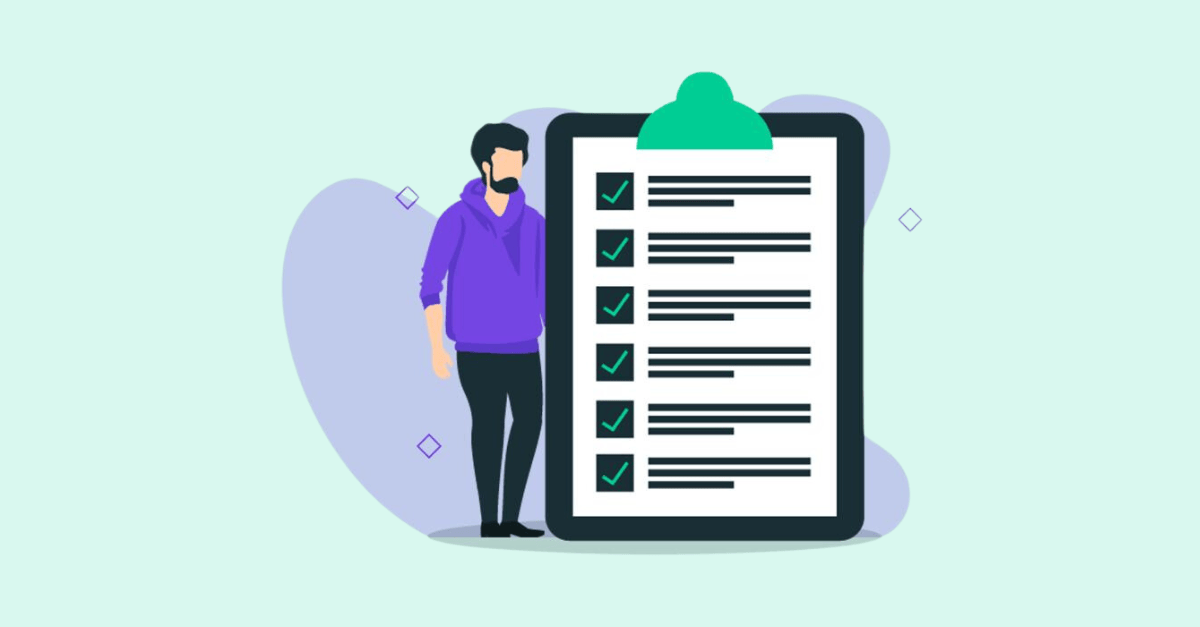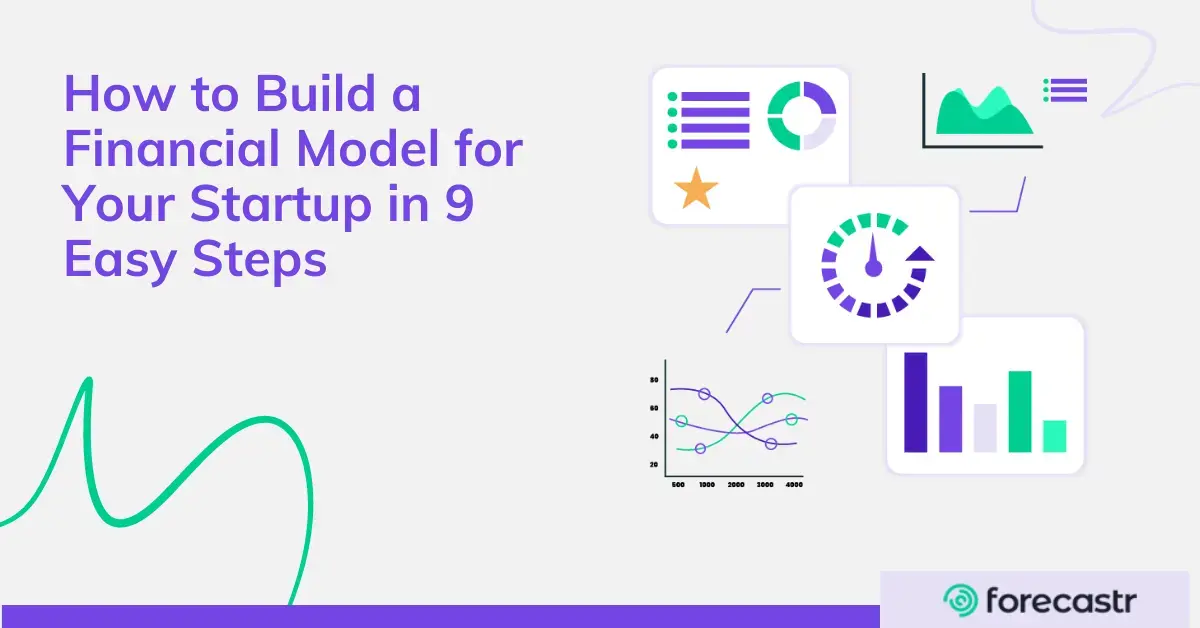Revenue forecasting best practices for small businesses and startups
Running a startup or a small business can feel like sailing through uncharted waters when you’re managing finances. As a founder, keeping your ship...
5 min read
 Evan Diaz de Arce
December 22, 2023
Evan Diaz de Arce
December 22, 2023
At Forecastr, we know that forecasting metrics is an essential part of running a successful startup. Accurately forecasting your startup's growth and success can help you plan for the future and make better decisions. But it's easier said than done. As a founder, how do you build a great forecast?
First, you need to identify the metrics you should project. Some startup metrics are pretty standard, and others may be unique to your business. Once you’ve identified the metrics that matter most, you can use different forecasting techniques to create realistic projections for the future.
In this post, we will discuss some key startup metrics to consider when building a forecast. Then we’ll walk through the different techniques you can choose from when you begin to build your forecast.
Key takeaways:
Identify crucial metrics: Pinpoint metrics like revenue, CAC, CLTV, Burn Rate, Gross Margin, and Cash Flow to project for your startup's success.
Forecasting techniques: Utilize techniques such as Top-Down, bottom-up, Scenario Analysis, and Time-Series Analysis to create realistic projections.
Regular analysis is key: Continuously analyze and update metrics to inform decisions on resource allocation, expansion, and product development.
Flexibility in forecasting: Acknowledge that forecasting isn't exact; remain adaptable by regularly reviewing and adjusting plans based on new information.
Resource support: Free financial model templates for assistance in building future plans!

First, a little dive into what startup metrics are all about.
Startup metrics are essential gauges of a company's health and potential. These metrics, ranging from Revenue to Cash Flow, provide vital insights into various aspects of a startup's performance. By meticulously tracking and analyzing these metrics, founders can gain a comprehensive understanding of their business trajectory.
Whether evaluating customer acquisition costs or projecting revenue streams, each metric provides valuable information essential for informed decision-making. Understanding these metrics empowers startups to navigate uncertainties, seize opportunities, and chart a path towards sustainable growth.
Revenue is the total amount of money that a business earns from selling its products or services. Forecasting revenue is critical. It helps you determine how much money you can expect to earn and how much you need to sell to cover your expenses.
Forecasting revenue involves analyzing factors such as market size, competition, pricing, and sales projections. Keep in mind that you should always be realistic in your projections. Over-projecting is a much bigger problem than under-projecting.
Customer acquisition cost (CAC) is the total cost of acquiring a new customer. CAC helps you understand how much you need to spend on sales and marketing to acquire a new customer.
To calculate CAC, divide the total amount spent on sales and marketing by the number of new customers acquired during the same period.
Customer lifetime value (CLTV) is the total value that a customer will bring to the startup over the course of their relationship. CLTV illustrates the value of acquiring a new customer and how much you can expect to earn from that customer over time.
To calculate CLTV, multiply the average customer value per period by the average customer lifespan. By focusing on increasing CLTV, you can improve customer retention and build a more sustainable business.
Burn rate is the rate at which you are spending your cash reserves. Burn rate is critical. It helps you understand how long you can continue operating before you run out of cash.
There are two types of burn rate (gross and net). Gross burn rate is just your total monthly expenses. Net burn rate is the amount of money you’re losing each month after taking into account any revenues. Keeping your burn rate under control ensures you'll have enough cash to meet your financial obligations.
Gross margin is the difference between your revenue and your cost of goods sold. Gross margin helps you understand how much you’re making on each sale.
To calculate gross margin, subtract the cost of goods sold from revenue and divide by revenue. By improving gross margin, you can increase your profitability and reinvest more money back into your business.
Cash flow is the amount of cash that is coming in and going out of the business. It helps startups understand whether they have enough cash to meet their financial obligations.
To calculate cash flow, subtract the total cash outflows from the total cash inflows. Manage your cash flow effectively and you can avoid running into cash flow problems that could put your business at risk.
Understanding and tracking these key startup metrics is crucial when forecasting your company's growth and success. It’s important to regularly analyze and update these metrics. This allows you to make more informed decisions about resource allocation, expansion, and product development. And this ultimately improves your chances of success in a highly competitive market.
Your key startup metrics have been identified and analyzed. Now you can use the following forecasting techniques to create realistic plans for the future.

Top-down forecasting involves starting with the total market size. Then you estimate your startup's potential market share. Factors such as customer needs, competition, and marketing strategies will help with this estimation.
This technique can be useful if you are entering a new market and do not have historical data to rely on. By using this technique, you can develop a broad understanding of the market and plan your expansion accordingly.
Bottom-up forecasting involves starting with the number of customers that the startup expects to acquire. Then you estimate your potential revenue based on the price of the product or service and the customer lifetime value.
Bottom-up forecasting can be useful for startups that have historical data on customer acquisition and revenue. It allows you to develop a detailed understanding of your customer base and track your progress over time. When using a bottom-up forecast you can adjust your forecasts based on actual customer data. This allows you to refine your sales and marketing strategies and make data-driven decisions.
Side note: While there are pros and cons to both top-down and bottom-up forecasting, many entrepreneurs prefer bottom-up forecasting for its accuracy and flexibility. Bottom-up forecasting allows you to base your projections on actual customer data and revenue.
This approach can also be more adaptable to changes in the market. It allows you to easily adjust your forecasts based on new data or feedback.
Scenario analysis involves creating multiple forecasts based on different scenarios. For example, you could create a forecast for the best-case scenario, worst-case scenario, and most likely scenario. This technique can be useful for evaluating the potential outcomes of different situations and allows you to plan accordingly.
By creating multiple forecasts, you can identify potential risks and opportunities. Once identified you can develop plans to mitigate or take advantage of them. Scenario analysis can help you understand the consequences of your decisions and make informed choices.

ARR (Annual Recurring Revenue) is a key metric for startups, representing the total predictable revenue generated from subscription-based products or services over a year.
Key metrics for startup validation include Customer Acquisition Cost (CAC), Customer Lifetime Value (CLTV), Monthly Recurring Revenue (MRR), Churn Rate, and Product-Market Fit indicators.
GMV (Gross Merchandise Value) represents the total sales value of goods or services transacted through a platform, while ARR (Annual Recurring Revenue) measures the predictable annual revenue generated from subscription-based products or services.
Time-series analysis involves analyzing historical data to identify trends, patterns, and seasonality. This technique can be useful when you have historical data on your customer base, revenue, and expenses.
It allows you to get a better sense of your business cycles. It helps you identify trends and seasonal fluctuations, and make more accurate forecasts. Time-series analysis can also help you optimize your operations, refine your sales and marketing strategies, and identify growth opportunities.
Forecasting is an important part of running a successful startup. By considering these key startup metrics and using these financial modeling techniques you can make informed decisions about the future of your business.
However, it's important to remember that forecasting is not an exact science. You should remain flexible and willing to adjust your plans as new information becomes available. By regularly reviewing and updating your forecasts, you can stay on track toward achieving your goals and avoid unexpected challenges.
If you’re ready to begin building out your forecasts, check out our free financial model templates! Download one now and begin building your plans for the future.
Get notified about new events, free resources, and fresh content

Running a startup or a small business can feel like sailing through uncharted waters when you’re managing finances. As a founder, keeping your ship...

A financial model is a critical tool that every startup and SMB needs to leverage. A model gives you a deeper understanding of your business. It lets...

Stepping into the startup world feels like diving headfirst into a sea of uncertainties. But, crafting a solid startup financial model is your...